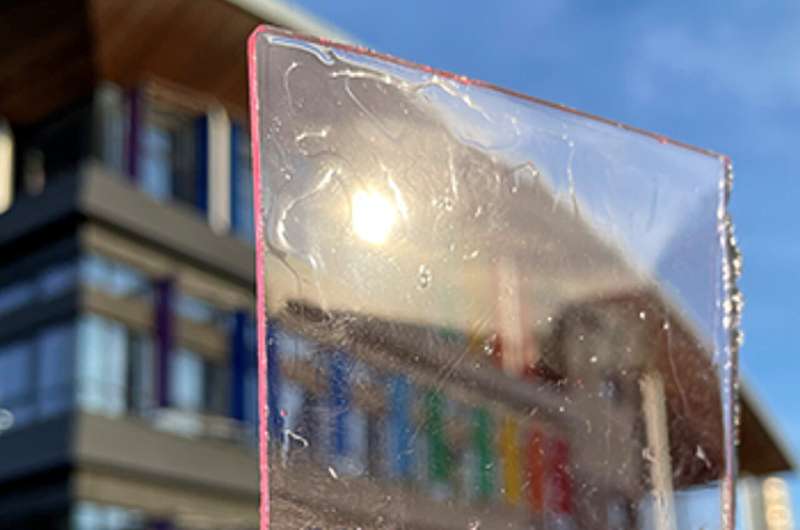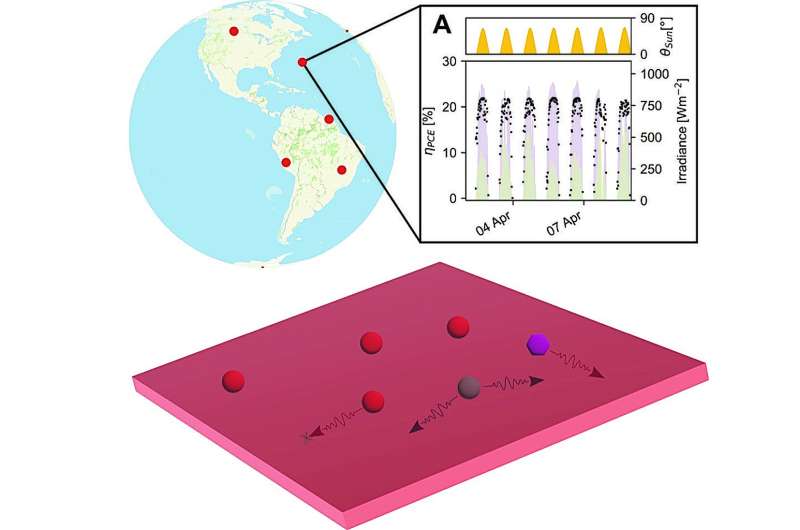This article has been reviewed according to Science X's editorial process and policies. Editors have highlighted the following attributes while ensuring the content's credibility:
fact-checked
trusted source
proofread
Reimagining the future of solar energy

Scientists are always on the lookout for ways to make our world a better place, and one area they're focusing on is solar energy. One idea in this area is to make solar cells more efficient by concentrating more solar light on them.
While investigating this recently, a group of scientists at the Cavendish Laboratory and AMOLF (Amsterdam NL) have found that improving solar cells' efficiency in this way is harder than we might think, but have discovered other avenues by which it might be possible to improve solar energy capture anywhere on the planet.
The researchers were interested in finding out if solar cells, devices that turn sunlight into electricity, could be tweaked to perform better in different parts of the world where the concentration of solar light may be higher. To examine this, they used machine learning models and neural networks (AI) to understand how the sun's radiation would behave in different spots on Earth.
They integrated this data into an electronic model to calculate the solar cells' output. By simulating various scenarios, they could predict how much energy the solar cells could produce at various locations worldwide.
Their findings published in Joule, however, revealed a surprising twist.
"Making solar cells super-efficient turns out to be very difficult. So, instead of just trying to make solar cells better, we figured some other ways to capture more solar energy," said Dr. Tomi Baikie, first author of the study and Research Fellow at the Cavendish Laboratory and at Lucy Cavendish College. "This could be really helpful for communities, giving them different options to think about instead of just focusing on making the cells more efficient with light."

Imagine solar panels that can flex and fold like origami or become partially transparent to blend seamlessly into surroundings and make them easy to install. By enhancing the durability and versatility of these panels, they could be integrated into a wide range of settings, promising longevity and efficiency.
"We suggest a different plan that can make solar panels work well in lots of different places around the world," said Baikie. "The idea is to make them flexible, a bit see-through/semi-transparent, and able to fold up. This way, the panels can fit into all kinds of places."
Furthermore, the researchers advocate the use of patterning solar capture devices with the aim of optimizing their arrangement for maximum sunlight absorption. This approach holds the potential to improve the design of solar arrays, increasing their effectiveness in harnessing solar energy.
"This realization means that we can now focus on different things instead of just making solar cells work better. In the future, we're going to examine solar harvesting pathways that include tessellation. It's like a puzzle pattern that could help us capture even more sun power," concluded Baikie.
More information: Tomi K. Baikie et al, Revealing the potential of luminescent solar concentrators in real-world environments, Joule (2024). DOI: 10.1016/j.joule.2024.01.018

















